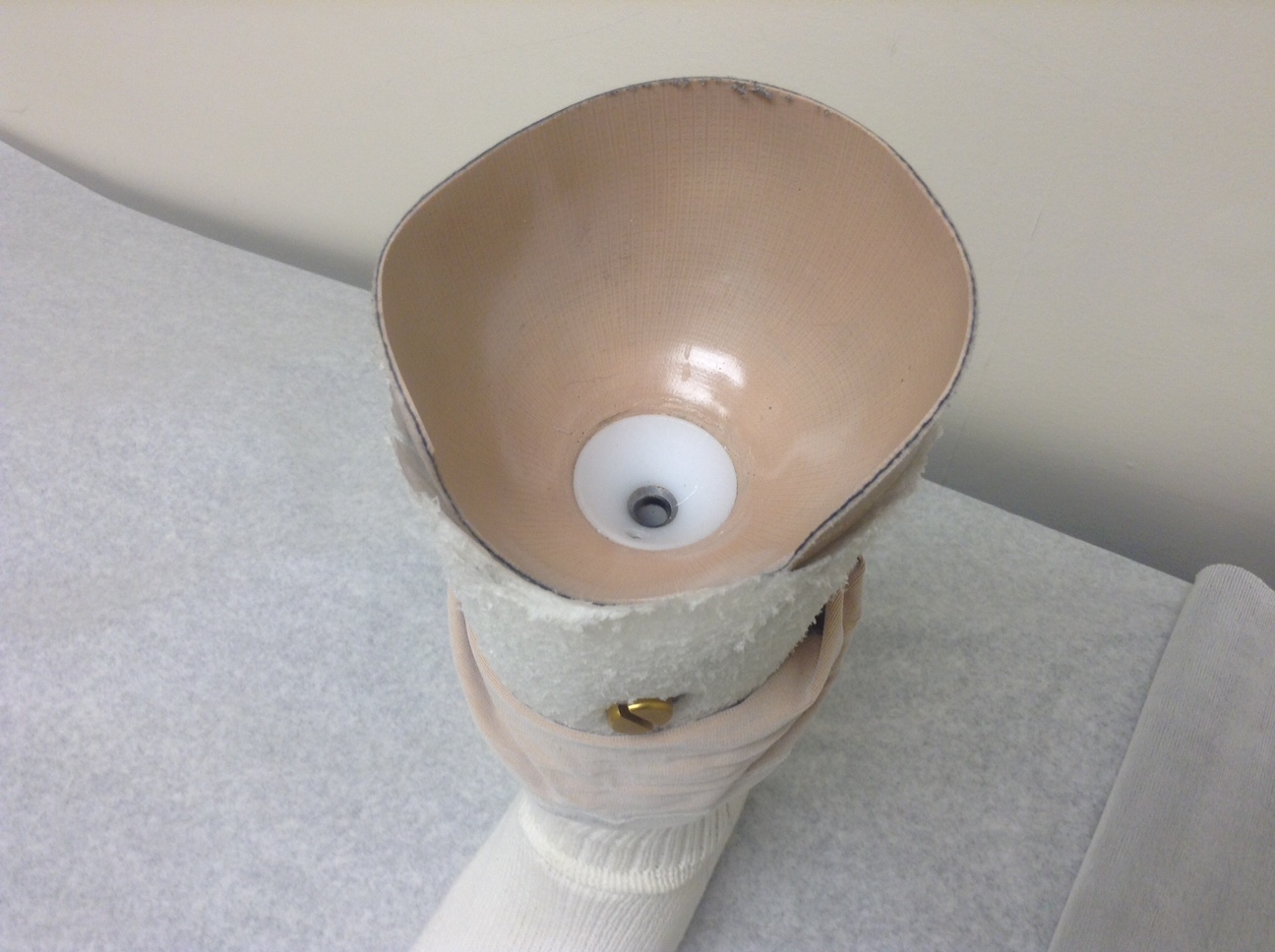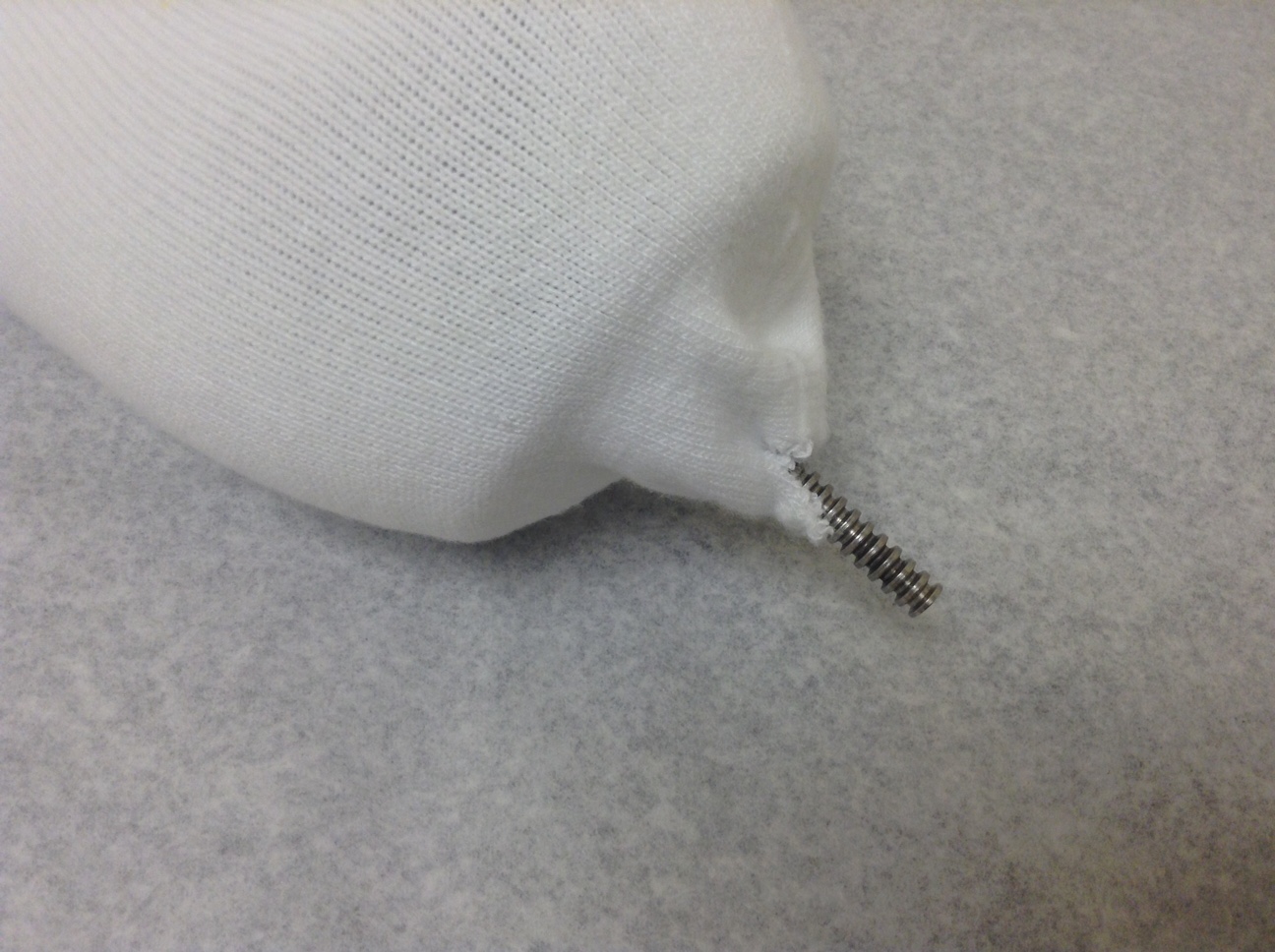Question:
What can I do if my locking pin gets jammed by a foreign object, and I am stuck in my prosthesis? Andy
ANSWER:
If your prosthesis is equipped with a push button mechanism which releases your silicone liner to allow you to take off your prosthesis, this mechanism is called a shuttle lock.
Over the years we have seen shuttle locks get jammed with foreign objects such as paper clips, craft paper and even a chunk of coal! Usually it is a frayed sock, and the fabric gets caught, or the sock is donned in haste and not pulled up to expose the pin, resulting in the pin and sock being pulled into the locking hole.
RULES OF THUMB to avoid the lock becoming jammed:
1. Do not allow the shuttle lock to become dirty. Build-up of dirt may cause the lock to malfunction. You should attempt to keep water, sand and dirt out of the socket.
2. Your socks were specifically made with holes in the bottom. This hole will allow the pin, located at the bottom of your liner, to be completely exposed.
3. Always pull socks on completely, no wrinkles allowed! Socks which are not pulled up allow the opportunity for the pin and the sock to become jammed inside the locking mechanism.
4. The lock should be inspected and cleaned by a prosthetist every year.
IF THE LOCK JAMS:
Do not panic and try to pull yourself out of the prosthesis. Water may be used as a release agent. Here is what you do:
- Get a glass of cold water.
- Pour the water between your skin and the liner.
- Work the water around the liner to cover as much surface as possible.
- Gently work your limb out of the liner. You may have to add water several times as you gently work your leg out of the liner.
Do not attempt to fix a damaged lock yourself. Call your prosthetist for service.
Do you have a question you would like to Ask Us? Email us at info@dankmeyer.com.





